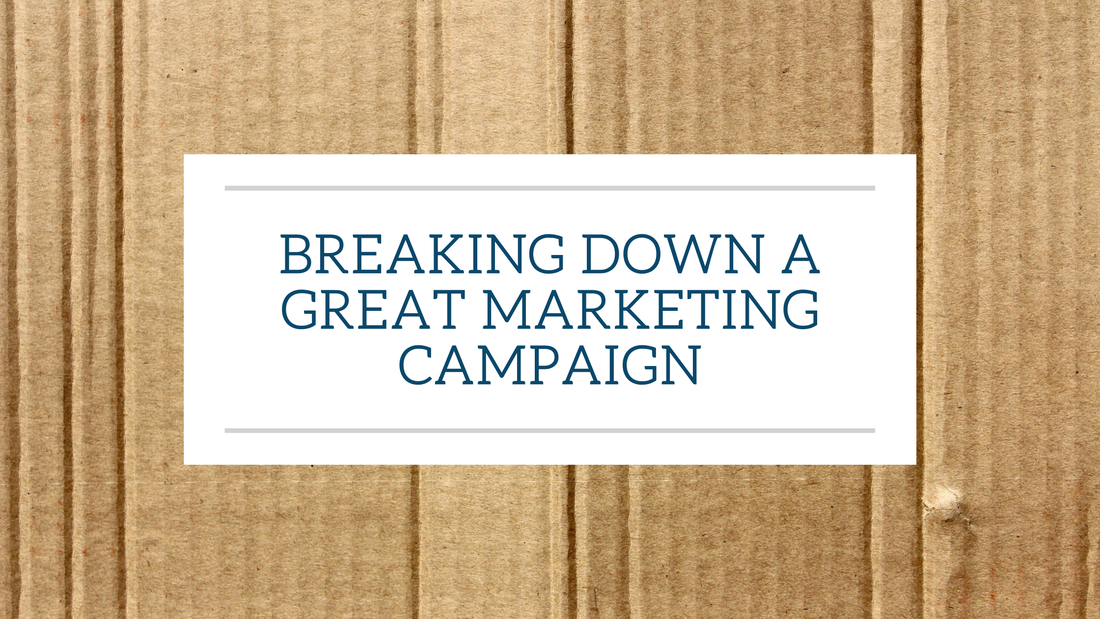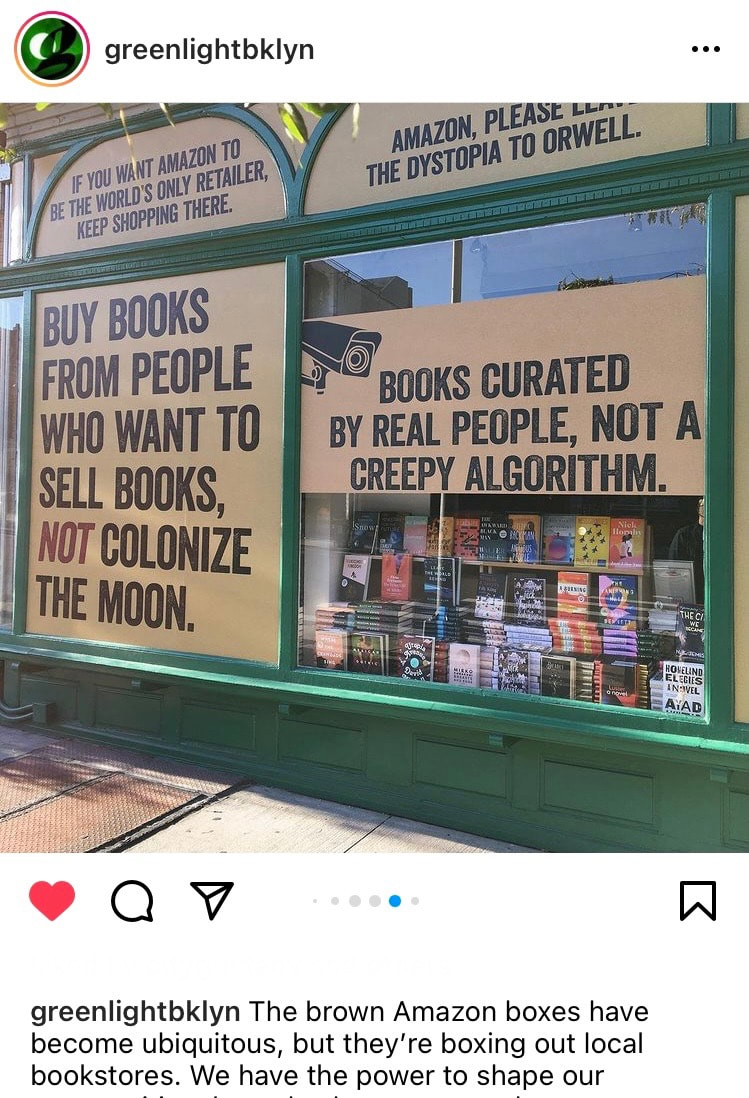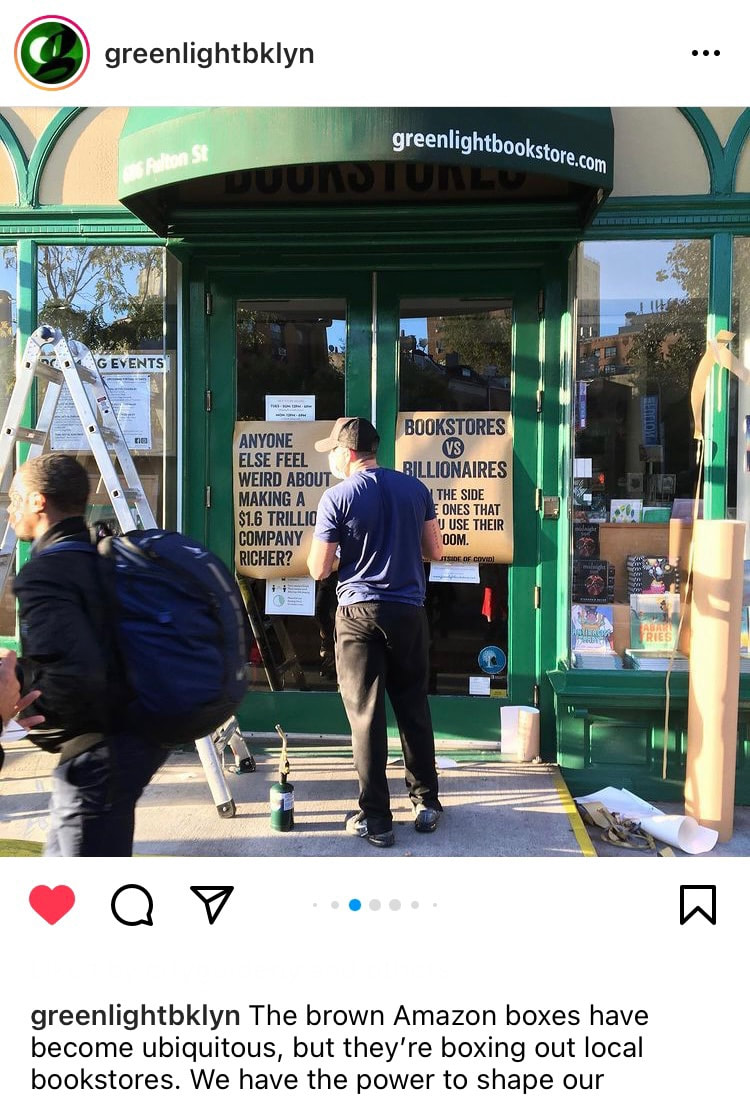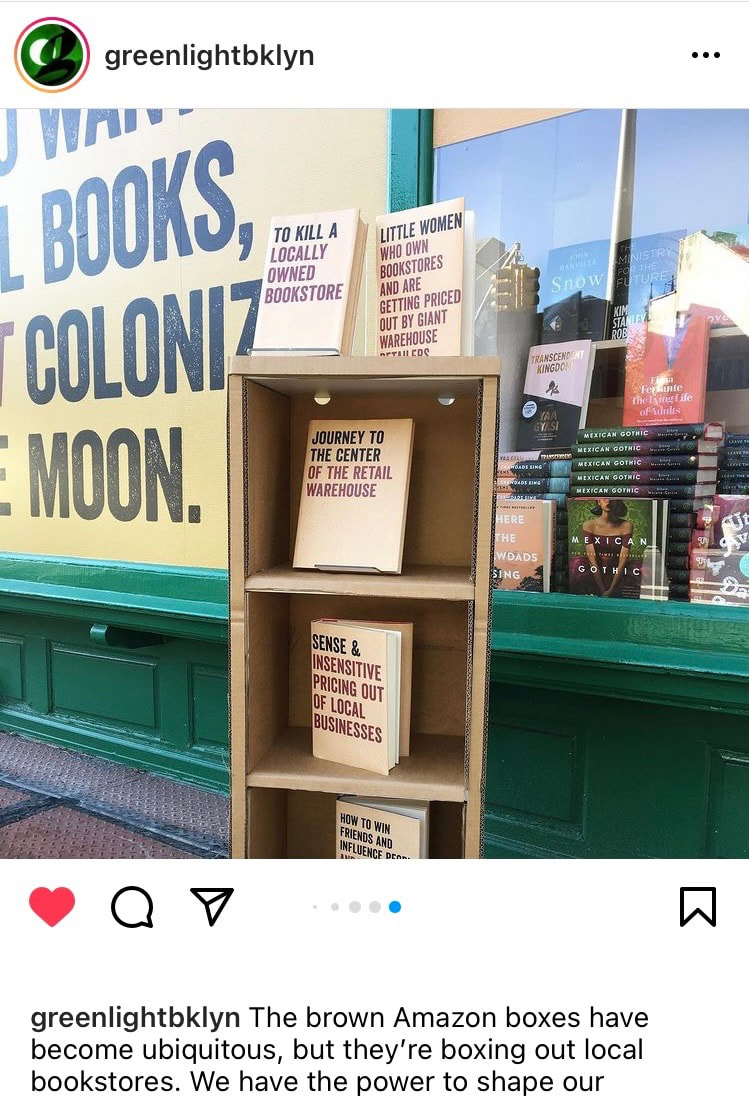|
Have you ever seen a marketing campaign so good that you still think about it months later? I sat down to brainstorm ideas for this week’s blog post, and an out-of-home campaign I saw back in October 2020 would not get out of my head. Those who know me are aware that I’m a sucker for an independent bookstore. I love places that have limited shelf space and carefully curated selections. I love a sensible bookstore cat, napping in the sun-drenched storefront window. I love when you can go in and say, “I want to buy a book for my dad. He’s into 1950s movies,” and the person behind the counter can disappear among the shelves and come back with five incredible options in hand, lightning-fast. Those who know me have also likely heard my thoughts on a certain online mega-retailer, known for eating into the profits of these independent bookstores that often can’t compete with two-day shipping and an unlimited selection. So I will admit, I am the target demographic for this campaign, one million percent. Greenlight Bookstore in Brooklyn participated in the American Booksellers Association’s Don’t Box Out Bookstores event. The event began in response to Amazon Prime Day, a now-yearly promotional day where Amazon slashes prices for Prime Members, thereby encouraging new people to sign up for the membership. The campaign, created by DCX Growth Accelerator and Hugo & Dean, covered the big, beautiful windows of Greenlight’s store with vinyl signage designed to look like Amazon’s brown shipping boxes. Aesthetically, the brown pops against Greenlight’s glossy emerald window frames. The use of black type echoes what you would see on a real box from Amazon, while the red calls out keywords and complements the surrounding green. Know thy color wheel! The copy is pointed but witty. References to Bezos’ Blue Origin and Amazon’s algorithmic selling method are just oblique enough where you need to be in the know to pick up what the copy is putting down. The wording is clever and winky. It says, “We have a master’s degree in English, and we’re not afraid to use it, bish." The copy uses the actual name of the mega-retailer sparingly. They don’t need to name the brand. We all know exactly who they’re talking about, which further highlights the whole problem. How can an indie seller compete with a household name?
Comments are closed.
|



